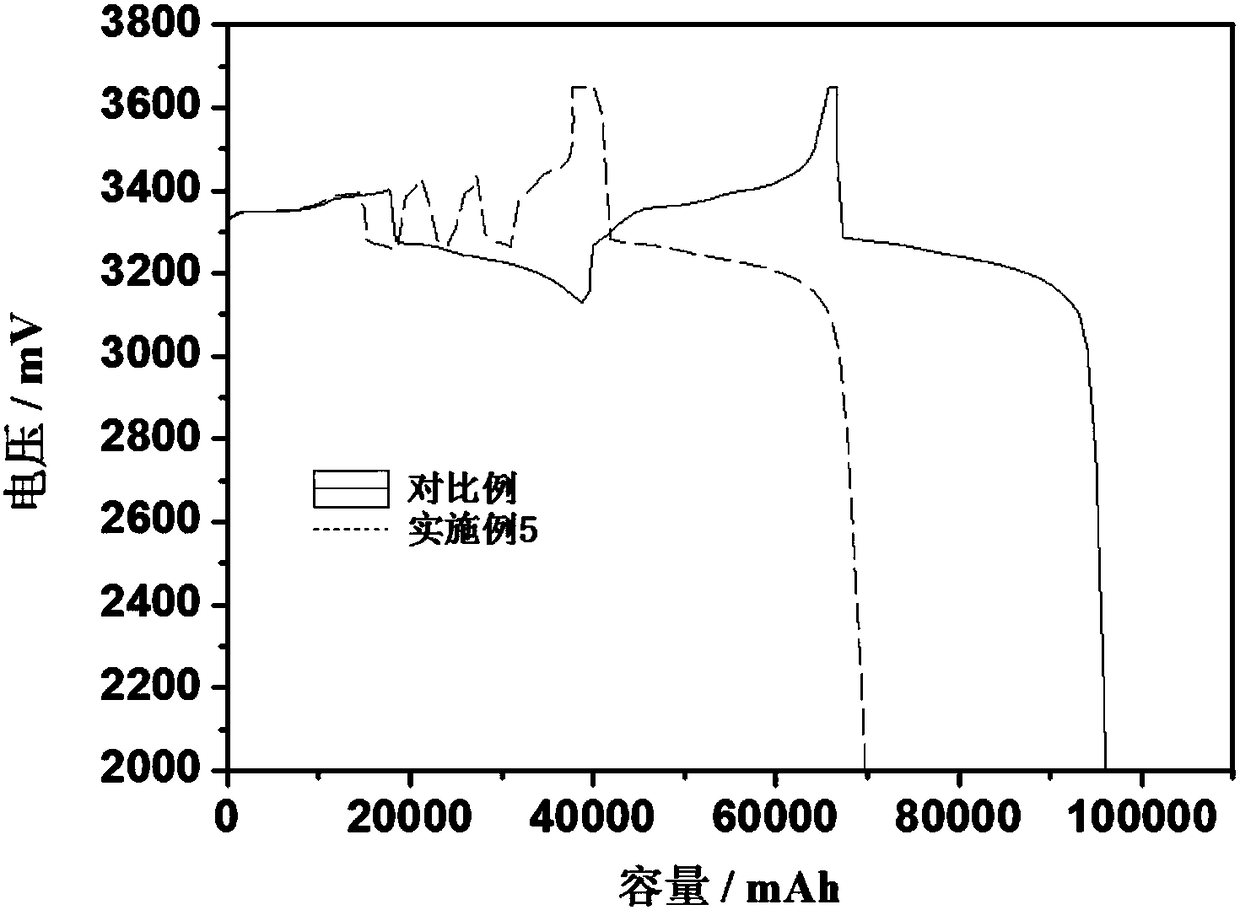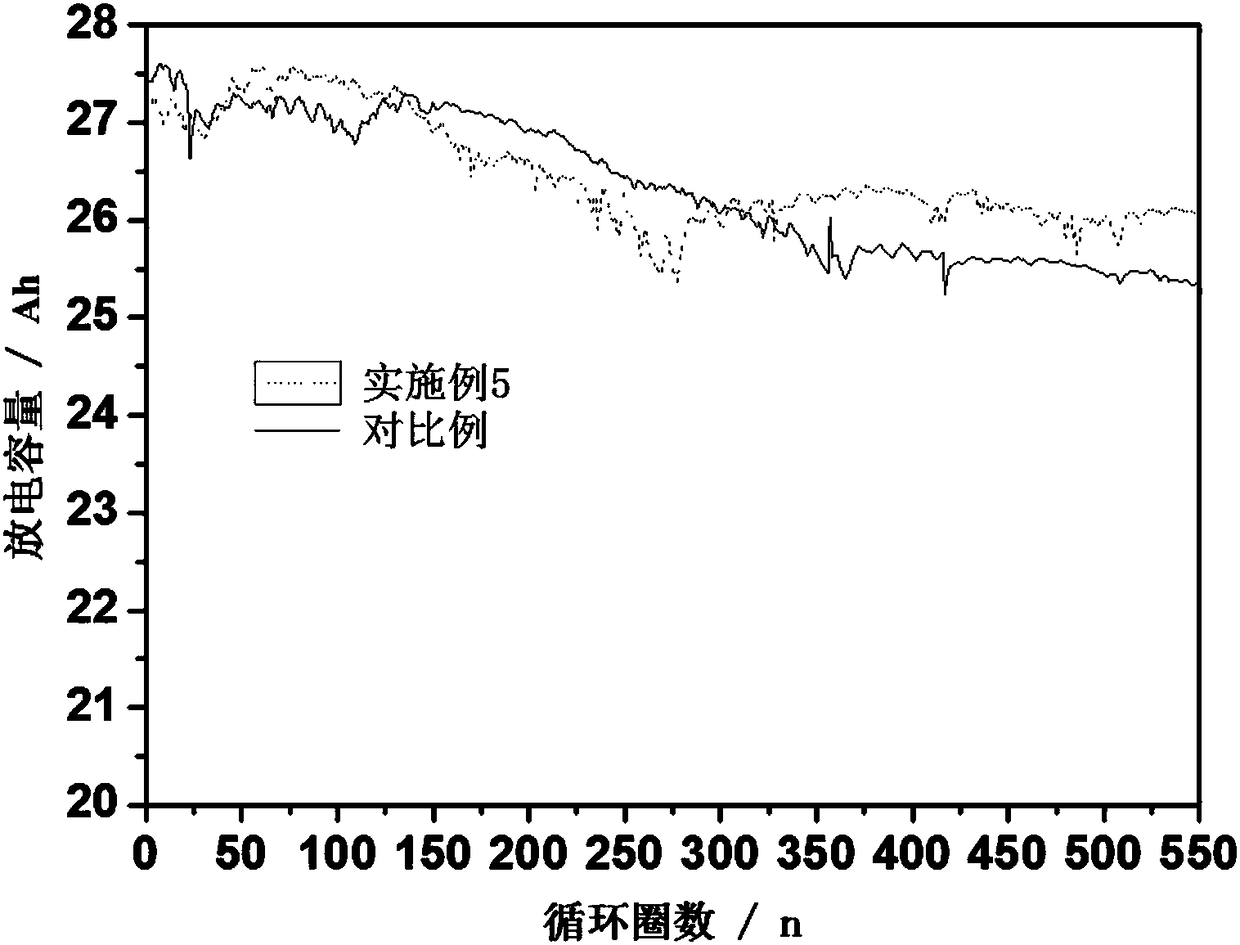Capacity grading method for power-type lithium ion battery
A lithium-ion battery, power technology, applied in non-aqueous electrolyte battery, electrolyte battery manufacturing, sustainable manufacturing/processing and other directions, can solve problems such as unfavorable stable and dense organolithium compounds, achieve short time consumption and increase production capacity , the effect of simple process
- Summary
- Abstract
- Description
- Claims
- Application Information
AI Technical Summary
Problems solved by technology
Method used
Image
Examples
Embodiment 1
[0022] For the lithium-ion battery after formation and sealing, carry out volume separation at room temperature, the specific steps are:
[0023] (1) Carry out the first charging stage, carry out constant current charging with a current of 0.1C, the charging time is 60 minutes, the cut-off voltage is 3.65V, the cut-off current is 0.02C, and it is left for 3 minutes;
[0024] (2) Carry out 2 repeated charge and discharge cycles with a current of 0.3C. The discharge and charge time are the same for 30 minutes, and the battery is left for 1 minute after each discharge or charge;
[0025] (3) Carry out constant current and constant voltage charging with a current of 0.6C, the upper limit of time is 60min, the cut-off voltage is 3.65V, the cut-off current is 0.02C, and it is left for 3min;
[0026] (4) Carry out constant current discharge with a current of 0.5C, the limit time is 110min, and the cut-off voltage is 2.0V.
Embodiment 2
[0028] (1) Carry out the first charging stage, carry out constant current charging with a current of 0.7C, the charging time is 180 minutes, the cut-off voltage is 3.65V, the cut-off current is 0.02C, and it is left for 2 minutes;
[0029] (2) Carry out 5 repeated charge and discharge cycles with a current of 0.8C, the time of discharge and charge is the same as 40min, and the battery is left for 1min after each discharge or charge;
[0030] (3) Carry out constant current and constant voltage charging with a current of 0.8C, the upper limit of time is 60min, the cut-off voltage is 3.65V, the cut-off current is 0.02C, and it is left for 3min;
[0031] (4) Carry out constant current discharge with a current of 0.8C, the limit time is 130min, and the cut-off voltage is 2.5V.
Embodiment 3
[0033] (1) Carry out the first charging stage, carry out constant current charging with a current of 0.2C, the charging time is 150 minutes, the cut-off voltage is 3.65V, the cut-off current is 0.02C, and it is left for 3 minutes;
[0034] (2) Carry out 3 repeated charge and discharge cycles with a current of 0.7C, the time of discharge and charge is the same as 25 minutes, and the battery is left for 1 minute after each discharge or charge;
[0035] (3) Carry out constant current and constant voltage charging with a current of 0.7C, the upper limit of time is 50min, the cut-off voltage is 3.65V, the cut-off current is 0.02C, and it is left for 3min;
[0036] (4) Carry out constant current discharge with a current of 0.6C, the limit time is 110min, and the cut-off voltage is 2.0V.
PUM
 Login to View More
Login to View More Abstract
Description
Claims
Application Information
 Login to View More
Login to View More - R&D
- Intellectual Property
- Life Sciences
- Materials
- Tech Scout
- Unparalleled Data Quality
- Higher Quality Content
- 60% Fewer Hallucinations
Browse by: Latest US Patents, China's latest patents, Technical Efficacy Thesaurus, Application Domain, Technology Topic, Popular Technical Reports.
© 2025 PatSnap. All rights reserved.Legal|Privacy policy|Modern Slavery Act Transparency Statement|Sitemap|About US| Contact US: help@patsnap.com



